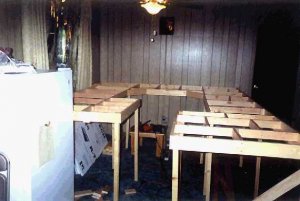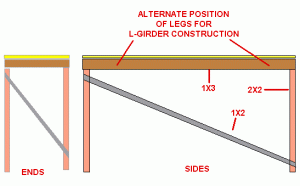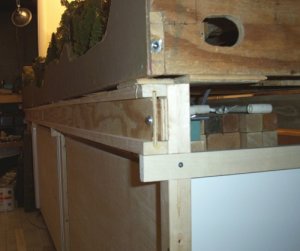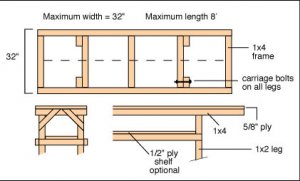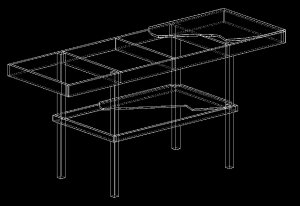Hi All
I have a question concerning the legs for benchwork. I'll be using 2x2's for the legs (unless anyone has any better suggestions). The benchwork itself will be 1/2" plywood on 1x3 joists. My question is, how far apart should the legs be? For an 8' x 32" module could I put legs at the ends only, or do I need another set in the middle?
Thanks in advance!
cheers
 Val
Val
I have a question concerning the legs for benchwork. I'll be using 2x2's for the legs (unless anyone has any better suggestions). The benchwork itself will be 1/2" plywood on 1x3 joists. My question is, how far apart should the legs be? For an 8' x 32" module could I put legs at the ends only, or do I need another set in the middle?
Thanks in advance!
cheers


